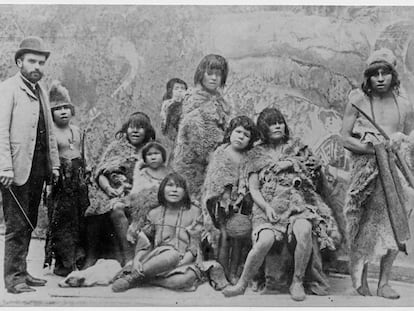The Tompkins: From making sportswear to preserving Patagonia
The founder of The North Face and the CEO of Patagonia bought more land than anyone else to donate to natural parks. Ten years after Douglas Tompkins’ death, EL PAÍS visits the paradise that he and his wife helped preserve
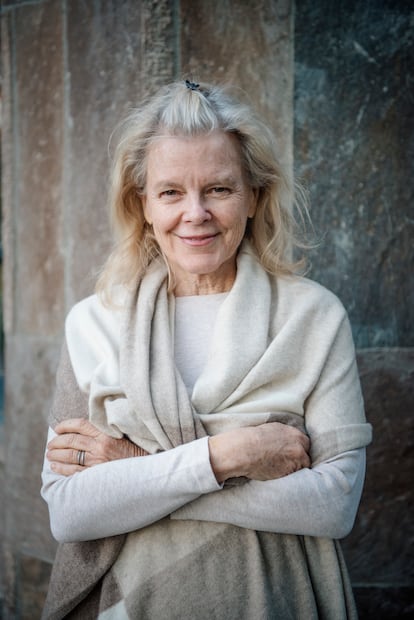

The “big five” of Chile’s Patagonia region are the guanaco, the puma, the huemul (considered the deer of the Andes), the condor and the rhea (the South American ostrich). The ideal place to see them in their natural habitat is Patagonia National Park. This site also best defines the philosophy of its founders: the American conservationist couple Kristine and Douglas Tompkins. They championed rewilding and restoring the land to its original state. Today, the national park is one of the greatest examples of land conservation in the world.
Since the Tompkins family set foot in the Patagonia region of Chile more than 30 years ago, it has never been the same. The environment has a unique landscape and cultural identity. This used to be a cattle ranch with thousands of sheep and cows until it was transformed into a vast expanse of pure, genuinely Patagonian plains. This speaks to the Tompkins’ original interest in eliminating invasive plant species (such as thistles) and removing fences, to allow for the return of native animal species, rather than reserving the land for soil-damaging livestock.
The landscape is defined by the presence of the bristly coirón plant, which brings a unique personality to the pigmentation and texture of the mountains and by the guanacos, who smoothly amble along the ground without damaging it. The couple’s intentions were both conservationist and touristic, as they appreciated the value of territories that deserve to be visited with respect and reverence.
In the documentary Our Great National Parks, Barack Obama narrated a description of the scenery: “A few years ago, Michelle and I visited Patagonia with our daughters. Amongst the snow-capped mountains and crystal-clear lakes, we marveled at an increasingly rare thing: untouched wilderness.”
“Human influence has spread far and wide across our planet. National parks can protect what we still have. But if we are to make a real change, we must return more of our land to nature. In Chilean Patagonia, vast areas are being rewilded, returned to their natural balance before we came along. This region is rapidly becoming one of the most protected places on Earth.”
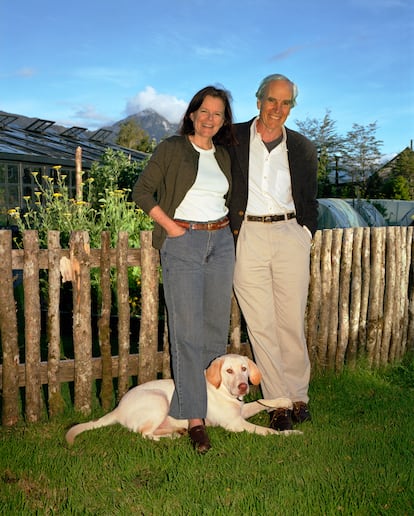
Patagonia National Park consists of the Chacabuco Valley and the former Tamango and Jeinimeni National Reserves. It’s located between the municipalities of Chile Chico and Cochrane, in the Aysén region. The project’s success was marked by the 2018 donation of more than 200,000 acres of the Chacabuco Valley to the Chilean state. This gift was given by the Rewilding Chile Foundation (formerly known as Tompkins Conservation Chile), an organization founded by Douglas and Kristine.
When asked about the thought process behind this generosity, Kristine, the foundation’s president, replies: “We were influenced by the Norwegian philosopher Arne Naess, who was a friend of ours for many years.” Naess advocated in favor of “deep ecology” and defended the need to rediscover human nature. He felt that the Western lifestyle and social conventions limited the evolution of individuals and their inherent potential. Therefore, Kristine adds, “at the heart of each of our parks lies the belief that all life has intrinsic value.”
Several books have been written about Douglas Tompkins’s life, such as A Wild Idea (2021), by British journalist Jonathan Franklin, and documentaries have been made that explain his uncompromising lifestyle, such as the moving film Wild Life (2023). Dick Dorworth, a legendary skier, who competed in the 1970s, said that Tompkins was the kind of person you could throw naked into the desert with a branch and, in a couple of weeks, he’d build an empire. Judging by the number of acres Tompkins accumulated through his business acumen, he wasn’t far off… although Dorworth forgot to add that, in Douglas’ hands, the word “empire” was a relative term. This was because he donated the most land in history for the purpose of conservation.
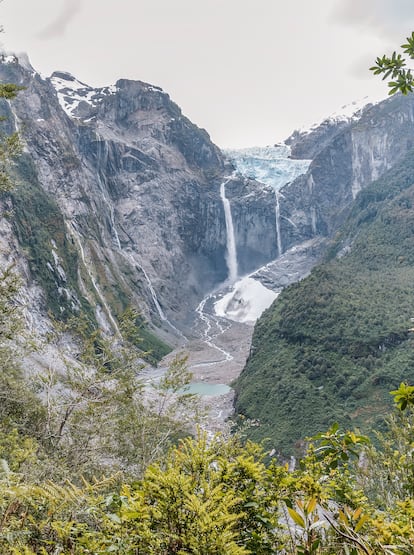
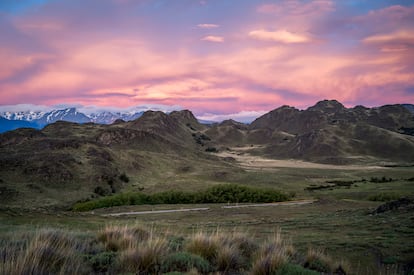
Tompkins was born in 1943 in Ohio. The son of an antique dealer and a decorator, he dropped out of school in 1962 to pursue cross-country skiing and climbing (his desire to see the world was stronger than his parents’ desire for him to attend college). He spent three summers felling giant trees. Logging guaranteed a bird’s-eye view of the forests and a big wad of cash.
In 1964, alongside his first wife, Susie Buell, he founded a mountain-themed clothing brand. Based in San Francisco, The North Face was founded on a simple idea: “If you want to understand the entrepreneur, study the juvenile delinquent. The delinquent is saying with his actions, ‘This sucks. I’m going to do my own thing.‘” When asked about the origin of the name, Tompkins responded with a mission statement to which he always remained faithful: “The south face is the most often climbed, the snow is softer, and the sunlight makes it warmer. I prefer the more difficult side. The hard, icy face. The North Face is a more difficult challenge. I take that route in life.”
Four years later, they repeated the venture with the Esprit clothing brand, which would yield, in Tompkins’ eyes, excessive profits. Meanwhile, his close friend Yvon Chouinard founded the Patagonia brand. The logo reflects Mount Fitz Roy, on the border between Argentina and Chile, which the two men climbed together. They fell in love with this corner of the world. And, years later, when they returned together, Douglas fell in love with Kristine McDivitt, who, at the time, was the CEO of Patagonia. After marrying in 1993, they sold their shares to purchase 75,000 acres in the region, with the goal of protecting them from mining and logging.
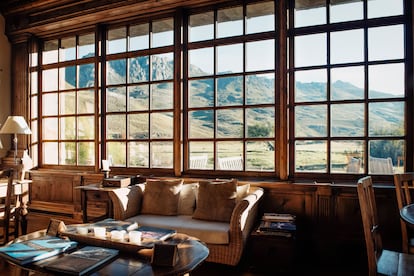
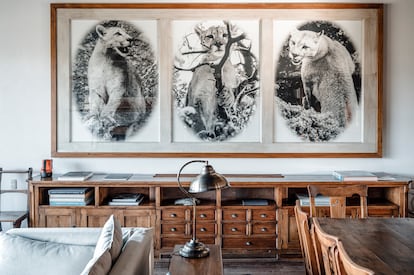
Patagonia Natural Park is foundational to this story. One night in 1995, after sleeping in a tent together for the first time, Douglas and Kristine decided to continually invest in their legacy. The spot where they camped is now a picnic area named Águila y Picaflor (“eagle” and “hummingbird” respectively), as they called each other. They lived in Casa Butler, which became the base for the Explora Hotel, which holds the concession to manage the accommodations in the park. The esplanade in front of the hotel served as a landing and takeoff strip for the legendary small plane that Douglas Tomkins used to pilot.
To learn about Douglas and Kristine’s entrepreneurial and environmental involvement, we can look at their achievements in two iconic parks: Pumalín Natural Park and Patagonia National Park. Reaching them requires passing through the unusual landscape of Queulat National Park, while witnessing the abundance of traditions, folklore and natural sights along the way. It takes a two-hour flight south from the Chilean capital of Santiago to Balmaceda, and a nearly seven-hour drive along the highway, Carretera Austral, to reach this place, which is devoid of people and steeped in history, ecological restoration and significant biodiversity. It represents a committed vision of nature.
Overcrowding doesn’t exist in this region. For those who hike (or not), every time you get out of the car, you’re greeted by breathtaking scenic beauty. This occurs whether you’re standing at the Douglas Tompkins or Confluencia observation points, strolling along trails and forests, kayaking over the clear waters of the Chacabuco River or the turquoise waters of the Baker River, crossing the famous suspension bridge, or paying attention to the footprints of guanacos, pumas, huemuls, chingues, rheas, or armadillos. No detail is too small. Every time EL PAÍS asks the hotel guides why they choose to work in such a place, they respond with the same answer: “Nowhere else do you feel as far removed from the world as here.”
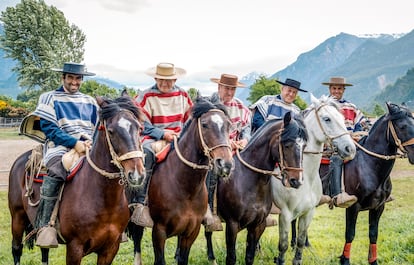
Carolina Morgado, executive director of the Rewilding Foundation, has worked with the Tompkins family for 30 years. She emphasizes the importance of publicly accessible infrastructure: “We’re committed to maintaining the territory and connecting communities to parks. Doug anticipated the current global crisis and understood the need for conservation and cultural change. He influenced the way Chileans viewed their territory; he wanted to create natural parks, invest in them and transform them into economic engines. Pumalín and Patagonia are models, because they generate an emotional connection. We promote wildlife programs, monitor pumas and huemuls, and have increased [the number of hotels] and car rental services. We encourage conservation and participatory tourism.”
At eight o’clock in the evening, a vivid light still tinges the sky. The sunset stretches out, scorching the horizon with an orange brushstroke and preserving the warmth of the sky. It’s an offering. Meanwhile, someone in the hotel lounge will alert the guests to go outside and watch the pumas’ silent passage.
The pumas have GPS collars and roam free. And, late in the day, they’re hungry. A guanaco scanning the landscape from the hilltop alerts the herd with an unmistakable neigh that puts everyone on alert. They live in groups, with several females surrounding a male. Guanacos run at a speed of 37 miles per hour for a long time, while the puma runs at a faster pace, but for a shorter duration. That’s why it advances silently and positions itself 65 feet from a guanaco that’s lagging behind the group. It doesn’t know it yet, but the animal will become a bloody dinner that guests will watch in astonishment, while fine-tuning the scene with their cameras. Afterwards, they’ll return to the lounge to finish their pisco sours.
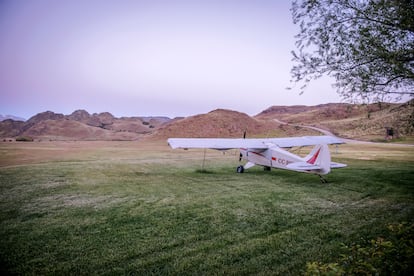
There were hurdles to overcome at the beginning. Part of the local business community saw the Tompkins as a threat. Few people viewed the rivers as a source of natural wealth: the area was seen as a place of mineral extraction, or as a source of hydroelectric power to meet mining and commercial demand. The couple was accused of ignoring the rights of the farmers who cared for (but did not own) the land they purchased. Was cold, hard cash enough to solve environmental problems?
In the end, several agreements signed between the Tompkins and the Chilean government dispelled suspicions. Chile’s then-president, Michelle Bachelet , who oversaw the donation from Kristine, said: “The oil of the past is the green hydrogen of the future.” Time, let’s say, has proved them right.
One afternoon, in 2015, Tompkins went kayaking on General Carrera Lake with some friends. During the crossing, the waters became violent and his kayak capsized. No matter how hard he tried to re-enter and roll, it was impossible. After being dragged by a friend for two hours, he reached the shore, gripped by fatal hypothermia. He was taken by helicopter to the Coyhaique Regional Hospital, but by then, he had stopped breathing. Like in a Greek tragedy, the nature he so protected and loved abandoned him.
Tompkins is buried in Patagonia National Park, in the Chacabuco Cemetery. When you exit, a sign reads: “There is no synonym for God more perfect than beauty.”
Sign up for our weekly newsletter to get more English-language news coverage from EL PAÍS USA Edition
Tu suscripción se está usando en otro dispositivo
¿Quieres añadir otro usuario a tu suscripción?
Si continúas leyendo en este dispositivo, no se podrá leer en el otro.
FlechaTu suscripción se está usando en otro dispositivo y solo puedes acceder a EL PAÍS desde un dispositivo a la vez.
Si quieres compartir tu cuenta, cambia tu suscripción a la modalidad Premium, así podrás añadir otro usuario. Cada uno accederá con su propia cuenta de email, lo que os permitirá personalizar vuestra experiencia en EL PAÍS.
¿Tienes una suscripción de empresa? Accede aquí para contratar más cuentas.
En el caso de no saber quién está usando tu cuenta, te recomendamos cambiar tu contraseña aquí.
Si decides continuar compartiendo tu cuenta, este mensaje se mostrará en tu dispositivo y en el de la otra persona que está usando tu cuenta de forma indefinida, afectando a tu experiencia de lectura. Puedes consultar aquí los términos y condiciones de la suscripción digital.
